Spring bluebonnets get all the glory, but there are native wildflowers that bloom all summer. Some bloom in June, some later and some bloom through September or even longer. In addition to being beautiful, native wildflowers are great plants to put in your garden.
As a bonus, native wildflowers adapt to the amount of rainfall and are drought tolerant. Of course, you have to water them when they are getting established, but they don’t need or want much attention after that.
There are dozens of wildflowers that will grow in Collin County. These are just ten possibilities.
Texas Bluebell

The Texas bluebell (Eustoma exaltatum ssp. russellianum) blooms from June to September. It likes moist fields, drainage ditches and prairies. The leaves and stems are a blue-green color and grow to be one and a half feet tall. The color of the flowers varies and can be blue, purple, pink, white or yellow. Flowers appear in the second year, and this plant grows up to twenty-four inches high. It is deer resistant.
Winecup
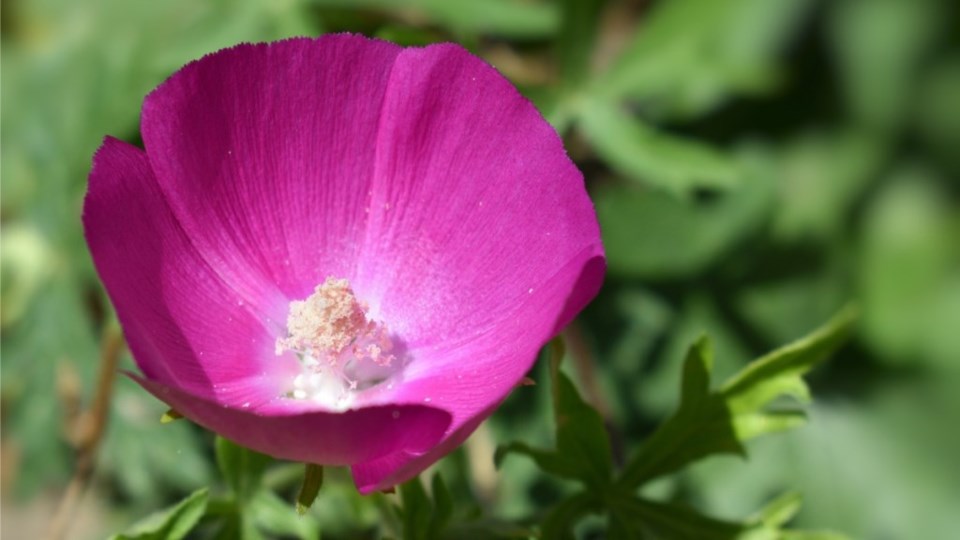
The winecup (Callirhoë involucrata) blooms in early spring into summer. The plants like dry prairies, grassy slopes and open woods. Winecups grow 8-20 inches tall. The stems and leaves are grey-green. The flowers are a beautiful violet to red-violet color and are cupped when young. They flatten out as the flowers grow older.
Common Sunflower

The common sunflower (Helianthus annuus) blooms July through October. These sunflowers grow on dry, disturbed soil to one and a half to eight feet tall. They have hairy stems and leaves, and the flower is yellow with a brown central disk. The seeds are edible and attract birds.
Fleabane
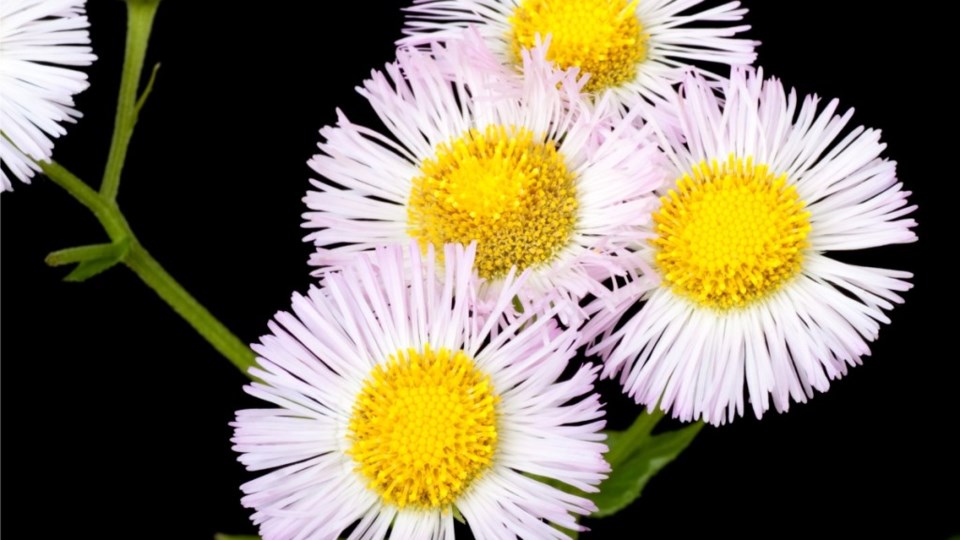
The fleabane (Erigeron philadelphicus) blooms from March through June. It grows along roadsides, in fields and in partly shaded woodlands. The plant is green with white flowers. The flower is made up of more than 150 thin petals and has a yellow center. The fleabane is also the larval host for the northern metalmark butterfly.
Butterfly Weed
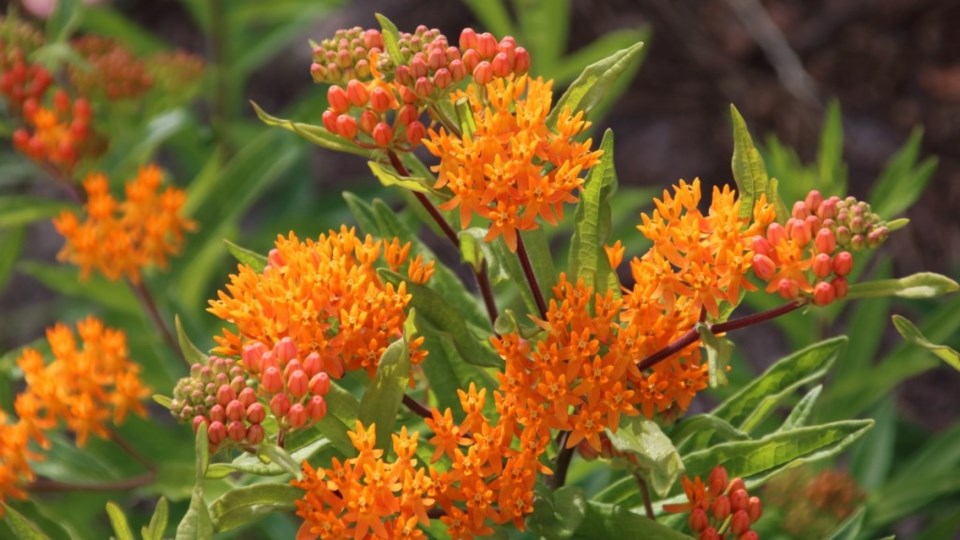
Butterfly weed (Asclepias tuberosa) blooms from April through September. It grows in prairies, open woods, canyons and hillsides. Ranging from one and a half to two feet tall, the butterfly weed has leaves that are dark green on the top and lighter green on the bottom. The orange-red or orange flowers attract butterflies and hummingbirds. The plant is a larval host to grey hairstreak, monarch and queen butterflies.
Purple Sand Verbena

The purple sand verbena (Abronia angustifolia) blooms from March through August. It grows in pastures, prairies, plains, savannas and other open areas.
Common Yarrow
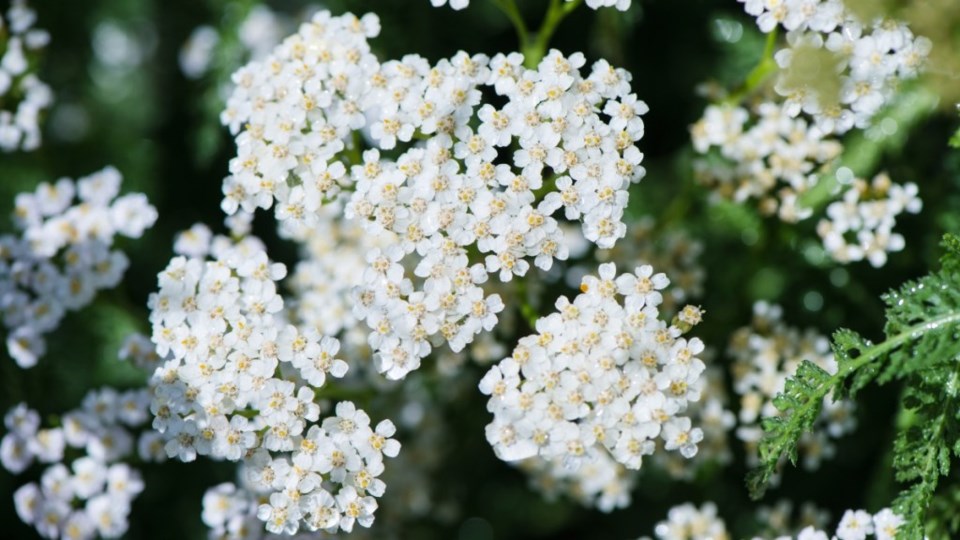
The common yarrow (Achillea millefolium) blooms from April through September. It is common where soils have been disturbed. Growing to three feet tall, the plants have green foliage and white flowers. The common yarrow is also deer resistant.
Texas Thistle

The Texas thistle (Cirsium texanum) blooms from April through August. It grows in prairies and roadsides. The thistle has dark green foliage and a purple flower. It’s a host plant for the painted lady butterfly. This plant is a good source of nectar and birds eat the seeds. Some birds use the thistle's flower tufts to line their nests.
Prairie Larkspur
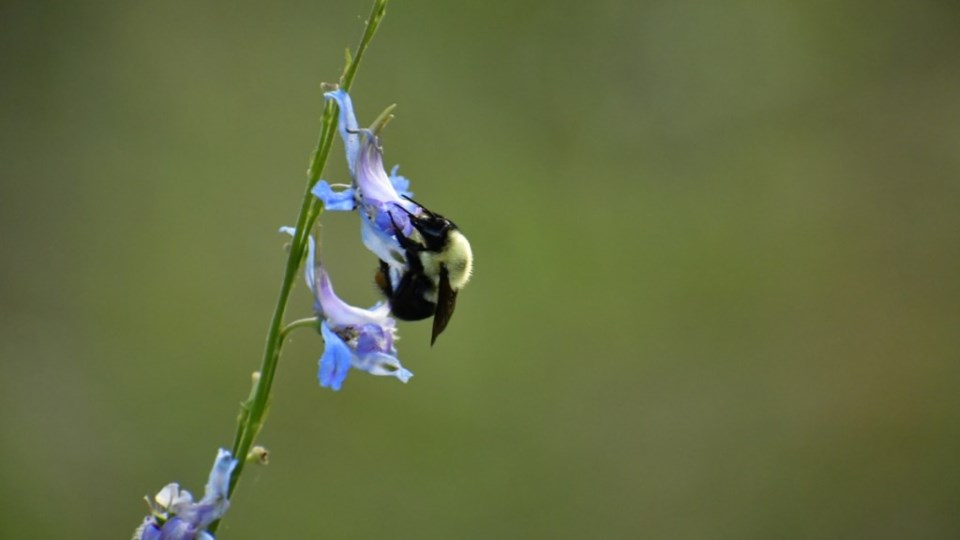
The prairie larkspur (Delphinium carolinianum) blooms from April through July. It grows in clusters in dry, open woods, prairie and brushlands. The plant reaches one and a half to two feet tall. The tubular flowers are blue turning into purple at the base of the tube. Important: This plant is poisonous.
How To Grow Wildflowers
Wildflowers are generally grown from seed. In our area, sowing seeds in the fall produces the best results. The plants often germinate and grow good roots in the fall, go dormant in the winter and then start growing again in the spring. Other seeds need to go through the winter weather to weaken the seed coating so the little seedling can emerge.
Since these flowers are adapted to Collin County, they require little attention once the plant is established. Most of these flowers do not require fertilizer.
Where To Find Seeds
Wildflowers can be challenging to obtain. In most cases, you will not be able to find plants, only seeds.
- According to the Lady Bird Johnson Wildflower Center in Austin, Native American Seed is a source for many different wildflower seeds.
- Wildseed Farms near Fredericksburg has been selling native wildflower seeds for 35 years. They allow people to tour their grounds so you can see what they are growing. The farm is beautiful in the spring.
- American Meadows sells a number of wildflower seeds and mixes. Their minimum purchase is a 1/4 pound of any particular seed.
- Eden Brothers also sells wildflower mixes and seeds for individual wildflowers, but in smaller quantities.
There are wildflowers that bloom from spring all the way up to winter. Pick a variety of blooms to have wildflowers all season long. In addition to not needing much care, wildflowers attract and feed beneficial insects, birds and sometimes other wildlife.




